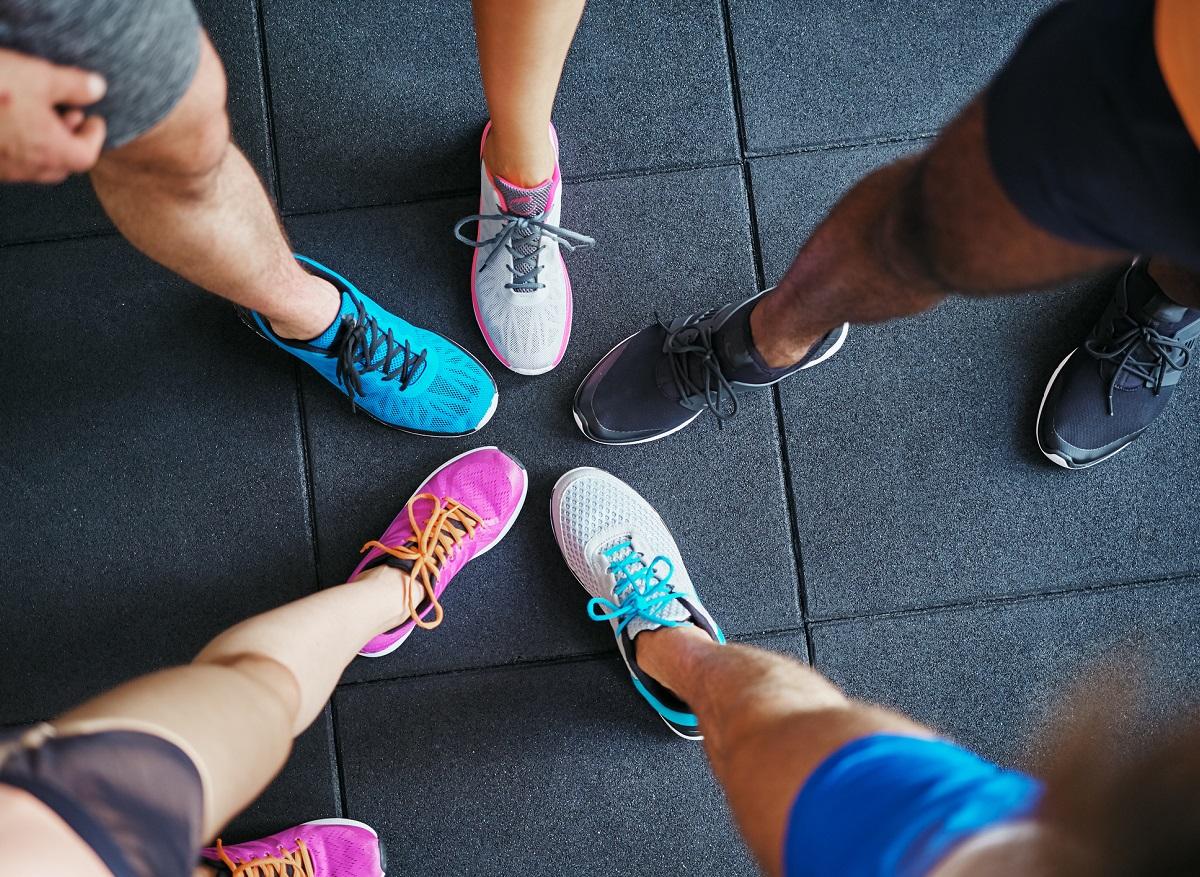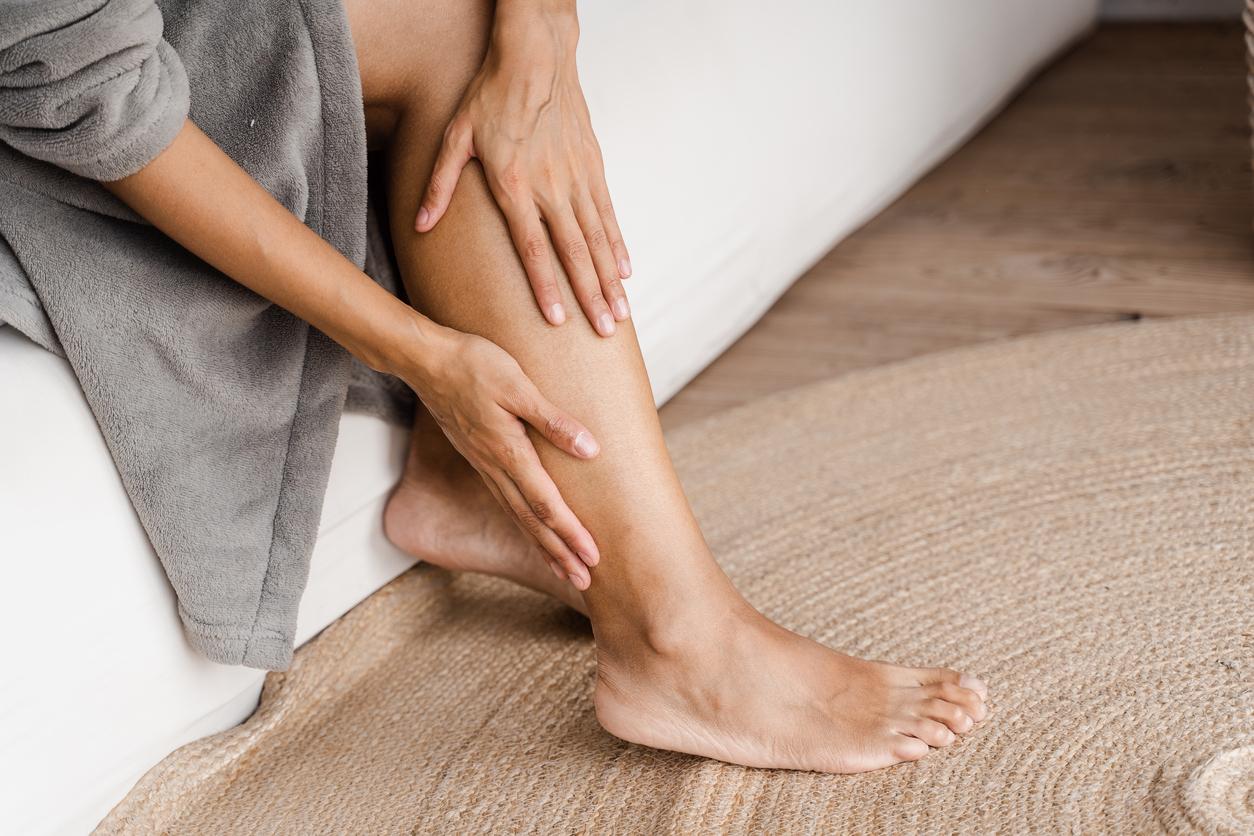
This way your feet stay in top shape!
A person walks an average of 185,000 kilometers during his life. That’s four times around the world! It is logical that our feet start to squeak and crack a bit with age. Fortunately, foot complaints can often be easily treated and prevented.
According to the Dutch Association of Podiatrists, 57 percent of the Dutch will suffer from foot problems one or more times during their lifetime. Because on average we are getting older and staying active longer, the number of foot complaints increases in old age.
What are the causes of the problems in the over 50s?
- Weakened muscles and tendons. The 107 ligaments and 19 muscles and tendons in the feet weaken over the course of our lives. They then have to work harder to keep the body in balance, which can cause a tired feeling.
- Footwear too tight. The more things stretch, the more space there is between the 26 foot bones. The foot becomes somewhat longer and especially wider, also known as a ‘sagged foot’. Shoes that always fit just fine suddenly become (too) tight. Result: painful, burning and tired feet, excessive calluses, corns, ingrown toenails or lumps on the big toes.
- Thinner fat pads. The fat pads under the ball of the foot and the heel also become thinner with age, sometimes resulting in pain. People then have the feeling that they are walking on stones or directly on their bones.
- Wear of cartilage. The cartilage between the foot joints wears down, causing stiffness, pain and deformities to occur.
- Deviating foot position. An incorrectly positioned foot – for example too much inwards or outwards – can also cause overload and pain or even inflammation. Sometimes also for complaints in the ankle, knee, hips, back or neck.
- Decreased blood flow. Less blood supply in the legs and feet results in drier skin and therefore a greater chance of fissures (cracks) and wounds. They also heal less quickly. The same goes for any fungal infections in the skin or nail.
Who is at extra risk?
- Diabetes patients often have poorly perfused feet, with all the consequences that entails (see question 2). In addition, the nerves in their feet are affected, so they no longer feel pain well. An unnoticed wound can easily worsen and become inflamed. That is why diabetics have to check their feet daily and have them taken care of.
- Rheumatoid arthritis patients often have pain in a foot due to inflammation, deformities and changes in position. A podiatrist can make special insoles to relieve pressure on the foot.
- People with dementia often walk a lot in a confused state, which can lead to foot complaints. Or they are bedridden, which can cause bedsores on the heel. An additional problem is that patients with dementia are not always able to express their pain. For example, their foot complaints can sometimes go untreated or worsen unnoticed.
- In general, women have four (!) times as many foot complaints as men. This is mainly due to the high heels they wear. The higher the heel, the more the bones, muscles, ligaments and tendons in the forefoot and toes are pushed together. That extra pressure can, for example, bend the big toe inward, possibly resulting in pain, an ingrown toenail or a lump (extra bone formation). The friction between the skin and shoe increases the risk of thick calluses and corns. Nerves are also pinched. This can cause tingling or a numb feeling.
Are high heels completely out of the question?
As long as you wear them occasionally for a few hours, high heels are no problem. But preferably not too often.
What is a ‘well-fitting’ shoe?
It is sturdy – the sole should be flexible, but not foldable – and leaves enough room (one centimeter) for the toes. You should be able to ‘play the piano’ in your shoe, as it were. There should also be some wiggle room on the side, near the little toes. For both men and women, a heel of no more than three centimeters is best. It is also important that the shoe fits well on the instep. If not, the foot will slide and you have to constantly tense your muscles in order not to slip out of the shoe. All this also applies to slippers. Always buy shoes in the late afternoon, when feet are at their largest. You can have both the length and width of your foot measured in a specialist store and find the right size for it. Do not always choose the same size automatically; The size may differ per manufacturer and model. Don’t be tempted by the well-known sales pitch that a tight shoe does ‘run out’. Your foot will mold to your shoe rather than the other way around.
You often hear that a small heel is better than no heel at all. Is that right?
This is especially true for people with knee or back problems. A small heel can then provide relaxation and pain relief.
Which complaints can you treat yourself and when should you seek professional help?
Calluses develop as a natural response to excessive pressure and friction on the skin. You can carefully remove a small amount of callus yourself with a sandpaper callus file. Do not remove too much and do not use an iron ‘grater’. This will damage the skin quickly, with the risk of wounds and infection. For all other foot problems, it is wise to seek professional help. The same goes for corns. There are various remedies available at the drugstore against corns, but these usually do not succeed in removing the deeper ‘pit’ of the corn and the risk of damaging healthy skin is greater. For example, fungal nails can also be treated well with a self-care product.
Can it hurt to walk with foot complaints for a long time?
Healthy feet are essential to remain independent and mobile. If left unchecked, most foot problems will get worse. A little callus is not bad, but very thick calluses can put extra pressure on standing and walking and therefore become painful. In addition, moisture can accumulate underneath, with the risk of infection. Untreated corns can also become infected. Stance problems of the foot affect the posture of the entire body and can eventually also cause complaints in other places (ankle, knee, back, neck). In general, the longer you continue with foot pain, the more time it takes to recover. Fungal infections are also highly contagious. You can easily transfer them to, for example, roommates or people at the sports club.
When do you go to a pedicure?
With calluses problems (thick calluses, corns), nail problems (ingrowing toenail, fungal nail) and skin problems (dry skin, fissures, fungus) you can go to a pedicure. She also gives advice on, for example, footwear, personal hygiene and skin care. Some pedicures have an endorsement ‘foot care for diabetics’ and/or ‘foot care for rheumatic patients’. This means that they have followed additional training in those subjects after their MBO training. There are also special medical pedicures. They have a broader education and can treat all high-risk feet (rheumatism, diabetes, dementia, etc.). In addition, they measure, for example, nail braces (orthonyxia) to adjust the shape of a nail and/or to prevent ingrowing. Pedicure is not a protected profession. That means everyone can call themselves that. For example, there are more and more nail studios that offer pedicure treatments without being trained for it. On the website www.provoet.nl you will find an overview of the 13,500 chiropodists who are affiliated with the ProVoet branch association. They have all followed a recognized pedicure training. With foot problems such as wounds that do not heal on their own, infections, strange discolorations, chronic pain and numbness, you go to the doctor. He or she will refer you to a podiatrist if necessary.
What does a podiatrist do?
A podiatrist is a legally recognized paramedic (someone who works on a doctor’s referral) with a college degree. He diagnoses and treats foot complaints (or complaints in other places in the body) that are the result of a foot that is not standing properly. Usually it concerns pain or fatigue, deformities and/or skin and nail disorders. Diabetes and rheumatism patients with serious complaints also see a podiatrist. A podiatrist has various options for treating foot complaints, such as fitting custom soles, silicone toe pieces or nail braces. The tasks of a podiatrist and a medical chiropodist partly overlap. If a problem is too complicated for a medical chiropodist, a patient goes to a podiatrist. In addition to treating, a podiatrist also gives advice on how to prevent complaints in the future, for example by wearing different footwear. There are about six hundred podiatrists in the Netherlands. You can search for a practice near you on www.podotherapie.nl, the website of the Dutch Association of Podiatrists. Always bring a pair of frequently worn shoes with you on your first visit. That helps to make a good diagnosis.
What are the latest developments?
More and more podiatrists are using a digital pressure measurement system to analyze a patient’s gait. This way they find out exactly where the problem is and whether insoles provide the right correction. Another development is the ‘cad-cam system’, which makes two- or three-dimensional photos of the underside of the foot. On the basis of this, a computer then mills a perfectly tailor-made insole.
Is a treatment by a chiropodist or podiatrist reimbursed by the health insurer?
Treatment by a podiatrist is included in the supplementary package with most insurers. Some health insurers reimburse a treatment by a chiropodist or podiatrist for diabetes patients from the basic insurance, others have included it in their supplementary insurance. Rheumatoid arthritis patients must always claim additional insurance for reimbursement. Other patients do not receive any compensation for a visit to a pedicure.
What can you do yourself to prevent foot complaints?
- Wear appropriate shoes with enough room for your toes and not too high heels.
- Cut toenails straight and not too short (not even rounded corners); this prevents ingrowth. Real nail scissors (instead of nail clippers) leave fewer strokes.
- Always dry your feet well, especially between the toes. • Lubricate your feet regularly with a foot cream to prevent dry skin, cracks and calluses.
- Limit a foot bath to five minutes. If you stay in the water longer, the skin will soften, making it extra vulnerable to wounds or infections.
- Walking barefoot is not a problem as long as you have no complaints. In case of standing problems it is better to wear a sturdy shoe. • When you wear flip flops, the muscles in your foot have to work hard to keep the flip flop in place. Frequent use can lead to complaints. Slippers that are too small cause calluses on the bottom of the heels.
This article was produced in collaboration with podotherapist Dorien Ketelaars (www.podotherapiedorienketelaars.nl) and medical chiropodist Marianne Vorstermans (www.pedicurepurmerend.nl).
Sources):
- Plus Magazine

















